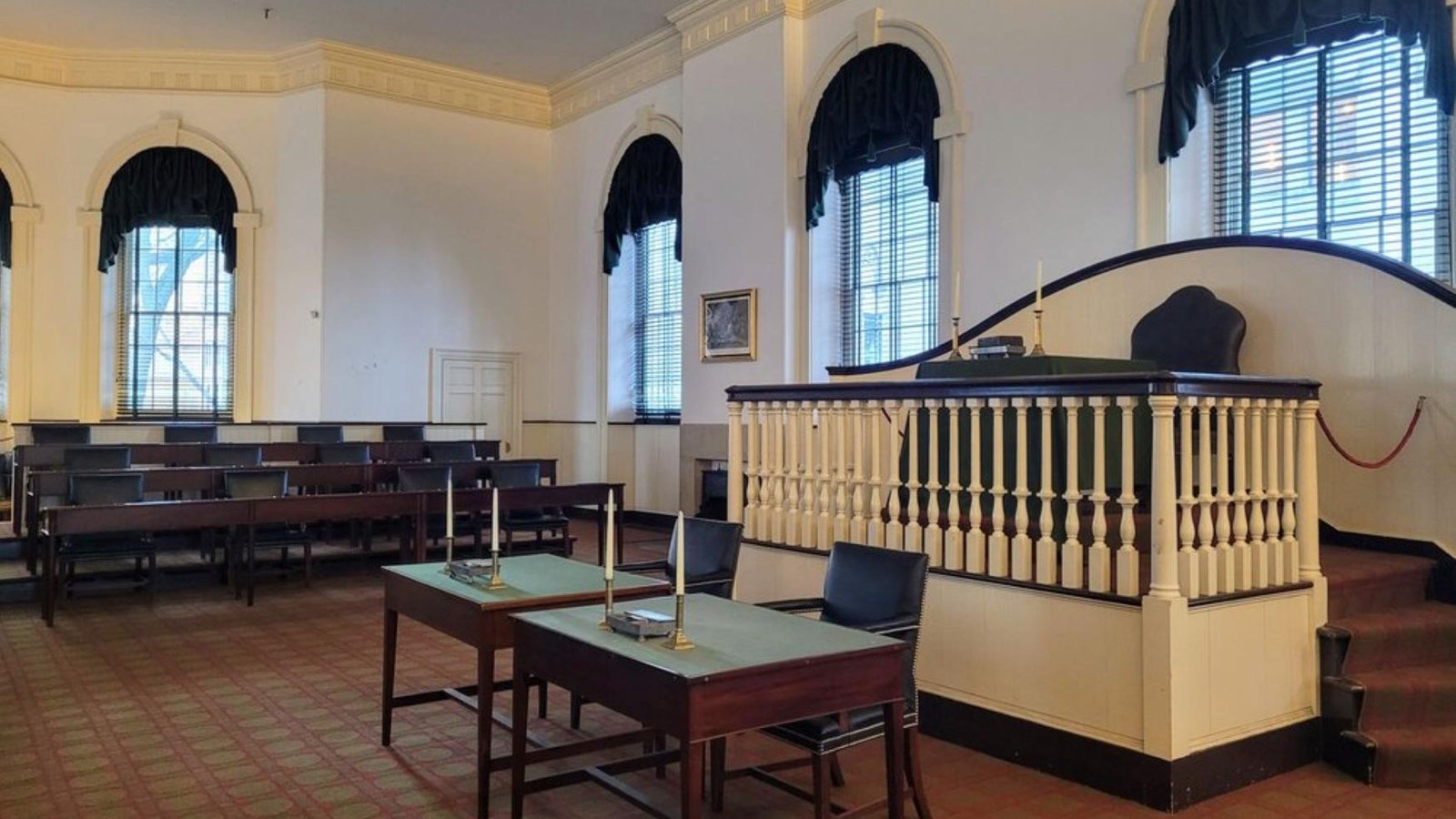Last updated: April 30, 2025
Place
Speaker of the House Platform in Congress Hall

NPS photo
Quick Facts
Location:
Congress Hall
Significance:
Site of John Adams' Inauguration as President
In 1796 America held a Presidential Election--and for the first time, George Washington's name was not on the ballot.
John Adams would become president, elected by three electoral college votes. The runner up, Thomas Jefferson, would become his vice president. At the time, the two men were political rivals and barely speaking and faced an uncertain four years together as president and vice president.This also created uncertainty for the nation. It was the 1790s, changes in power normally meant wars, beheadings, or a death of a king or a queen. George Washington was simply stepping down.
On March 4, 1797, the whole of the House floor and viewing area was full. People waited outside. George Washington, now a private citizen, took a seat. John Adams stood near this site and took the oath of office of the President of the United States, said his inaugural address and after 25 minutes everyone left. The United States had a new president. A peaceful transfer of power—no war, beheadings, or military coup.
While still young and uncertain, a peaceful transfer of power provided the country with stability as they left Philadelphia and moved to their new home in Washington D.C. in 1800.
John Adams would become president, elected by three electoral college votes. The runner up, Thomas Jefferson, would become his vice president. At the time, the two men were political rivals and barely speaking and faced an uncertain four years together as president and vice president.This also created uncertainty for the nation. It was the 1790s, changes in power normally meant wars, beheadings, or a death of a king or a queen. George Washington was simply stepping down.
On March 4, 1797, the whole of the House floor and viewing area was full. People waited outside. George Washington, now a private citizen, took a seat. John Adams stood near this site and took the oath of office of the President of the United States, said his inaugural address and after 25 minutes everyone left. The United States had a new president. A peaceful transfer of power—no war, beheadings, or military coup.
While still young and uncertain, a peaceful transfer of power provided the country with stability as they left Philadelphia and moved to their new home in Washington D.C. in 1800.
